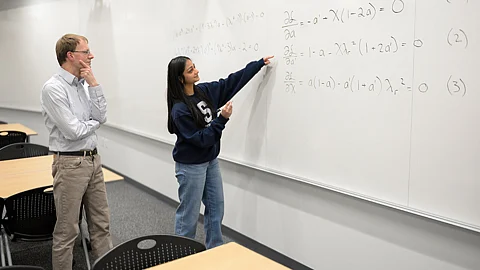
- HOMEGROWN WORLD
- #HGCREATORS
- #HGEXPLORE
- #HGVOICES
- #HGSHOP
- CAREERS
- ABOUT US
- CONTACT US

Before they were a power source, windmills were originally used for grinding grain and pumping water in ancient Persia, China, and Europe. But the leap from mechanical work to electricity came in the late 19th century when Scottish engineer James Blyth built the first wind-powered generator in 1887. It was a modest device, but it planted the seed for what would grow into one of the most vital pillars of renewable energy today.
As the global need for sustainable energy intensifies, wind technology has become a key player. But beneath the towering blades lies a web of physics and mathematics. And within that web, one particular knot — 'Glauert’s problem' — has puzzled experts for generations.
This is where Winterbine, a research initiative focused on improving turbine design, entered the picture. Their mission was clear: refine how we understand aerodynamic forces acting on blades, and do it with mathematical precision. Yet, despite advances in technology, Glauert’s problem, related to airflow behavior and load predictions, remained a stubborn challenge. Many had tried to tackle it. Most gave up. But not Divya Tyagi.
A Penn State engineering student at the time, Divya was the fourth person approached by Sven Schmitz, a leading researcher and professor at Penn State, to take a crack at the issue. “When I thought about the Glauert problem, I thought steps were missing and it was very complicated,” Schmitz recalls. “There had to be an easier way to do it. That’s when Divya came in.”
She spent 10 to 15 hours a week, sometimes more, wrestling with complex equations, reworking models, writing, refining, and rewriting her thesis. “It took a long time because it was so math intensive,” she admitted. “But I feel really proud now, seeing all the work I’ve done.”
Her persistence paid off. Divya found a more streamlined approach to the problem, one that didn’t just inch past the old methods but restructured the way researchers could think about it altogether. Her contribution opened the door for others to walk through with more ease.
The implications of her work reduced costs, improved energy efficiency, and optimized design, are already rippling outward. It’s no surprise that her thesis earned the prestigious Anthony E. Wolk Award, recognizing it as the best among aerospace engineering students in her year. Schmitz believes her approach won’t stay confined to research papers. It will likely become part of aerospace and engineering classrooms around the world.
Now pursuing her Master’s degree in Mechanical Engineering at Stanford University, Divya continues to build on the momentum of her undergraduate work, driven by the same clarity of thought and determination that brought her solution to life. Her contribution to wind turbine design isn’t just a standalone achievement; it’s a stepping stone in a much larger journey of innovation in renewable energy. As the world turns more urgently toward sustainable power, it will be minds like Divya’s — methodical, unrelenting, and revolutionary, that will shape what comes next.
If you enjoyed reading this here's more from Homegrown:
Meet The British-Indian Astrophysicist At The Forefront Of The Search For Alien Life
From ADITYA To SST-1: A Brief History Of India's 'Artificial Sun' Fusion Reactors
Indian Tech Company Praan's New Smart Air Purifier Is (Literally) A Breath Of Fresh Air
